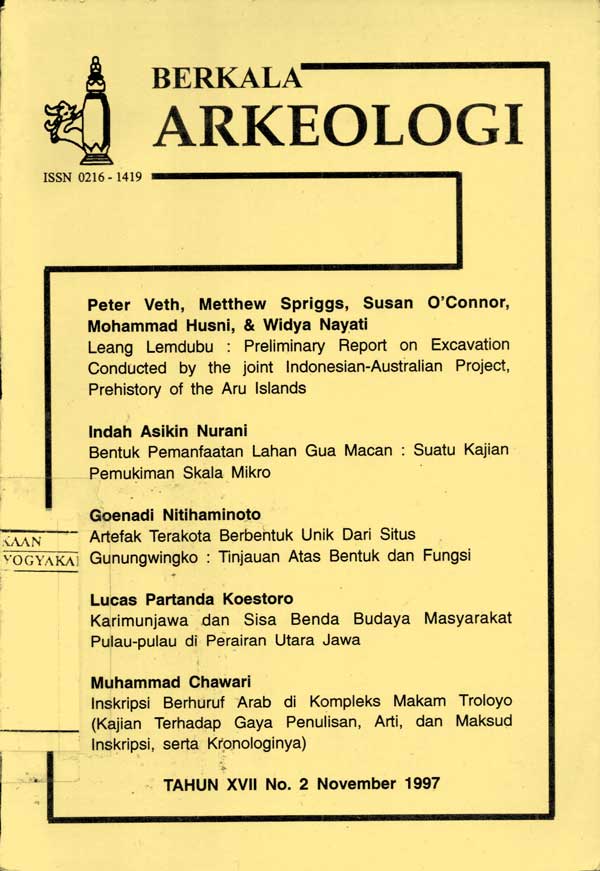LEANG LEMDUBU: PRELIMINARY REPORT ON EXCAVATION CONDUCTED BY THE JOINT INDONESIAN-AUSTRALIAN PROJECT, PREHISTORY OR THE ARU ISLANDS
Main Article Content
Article Details

This work is licensed under a Creative Commons Attribution-NonCommercial-ShareAlike 4.0 International License.
References
The Aru Islands were connected to Greater Australia until approximately 8.000 years ago, when they were separated by rising sea levels. While now forming part of the Indonesian province of Maluku. for a long time they comprised an elevated land mass on the edge of the Sahul continent. The presence on Aru of numerous marsupials and the cassowary attest to this shared history. Indeed the biogeographical significance of the Aru Islands has long been highlighted by naturalists such as Wallace. While the waters to the east of the Aru Islands are relatively shallow reflecting the previous land bridge with Irian and Northwest Australia the continental shelf to the west slopes steeply with the 100 m isobath located as little as 10 km away. Due to their optimal position, the Aru Islands have the potential to register a multitude of maritime colonising events through time.

